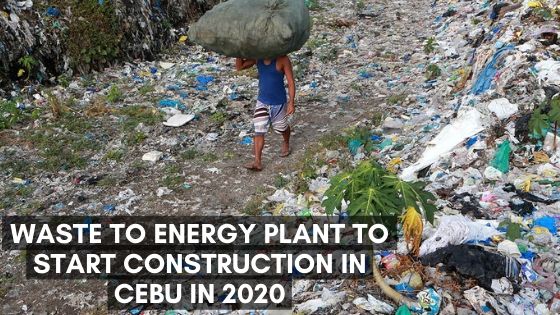
Cebu is one if the highly-urbanized cities in the Philippines and like the rest, it is riddled with various challenges like traffic, pollution and garbage disposal and management. Among these challenges, that have been in existence for the longest time, garbage disposal remains to be the titan. The floods that happen with rain is an eyesore, let alone the garbage left after the rain passes.

When the Inayawan landfill was closed around three years ago, garbage disposal became a harder pill to swallow, as the Cebu City government had to find other means on where to dispose it, that involved the use of the Binaliw landfill and even considering as far as the Aloguinsan landfill. The process of transporting the garbage to the landfill is tedious, especially when the trucks ply the main roads, leaving garbage debris along the way.
You might ask, was there any regulation or law implemented to address the garbage disposal problem? Yes, there are two: The Anti-Littering ordinance passed in 1990 or known as the Ordinance 1361 and the Ordinance 2031, focused on the trash segregation that was passed in 2004. Even with these two ordinances, these are left on deaf ears due to lack of strict implementation. Although there are some barangays that have followed thru with the implementation since March 2018, it is not enough to alleviate the problem.
As the landfill grows, the need for a sustainable waste management system is essential of which a private enterprise has been given the go signal to proceed with the groundwork for a waste-to-energy facility, the Paris-based CNIM Martin Private Ltd. Its track record of building waste-to-energy facilities is evident in the 170 facilities completed in 23 different countries.
The Cebu City facility aims to generate about 12 megawatts of energy from the expected daily trash volume of 480 tons, of which a portion of the generated energy will be sold to the power grid, as the facility will also be using the generated energy to run the plant. Its construction is expected to start in the first quarter of 2020 and be completed in two years, provided that the weather and the chosen contractor will cooperate. So, from now until the facility is up for operation, garbage disposal will still follow the same process and we can only wait until this initiative comes into fruition.
The establishment of a water-to energy facility is indeed costly, especially that we are employing a foreign company to help us in making this a reality. Instead of looking at it as a cost, let’s look at it as a long-term investment, aimed to reduce our garbage landfills and have another source of energy. In the long run, there will be additional benefits that may come from this like cleaner air, lesser floods (hopefully) and even proper info dissemination and continuous implementation of the ordinances for the citizens.
I believe that Cebu can achieve the Mega Cebu 2050 program with this direction, with the right mindset and positive attitude towards this. The Cebu City government can only do so much that it would be most beneficial for the people if they disregard their political biases and work together to make this come true.
Source: https://www.pna.gov.ph/articles/1086206